Part of Heath Park was used as the site of the Heath Park Campus. Situated a short walk from the former Cross Inn, the campus is shared between the University Hospital of Wales and Cardiff University’s medical schools. Outside the landmark hospital (which opened in 1971) is Aneurin Bevan Way, named after the founder of the National Health Service. ‘Nye’ Bevan was a native of south Wales, born in Tredegar, 15 miles or so north of Cardiff.
Photographs and text about Aneurin Bevan.
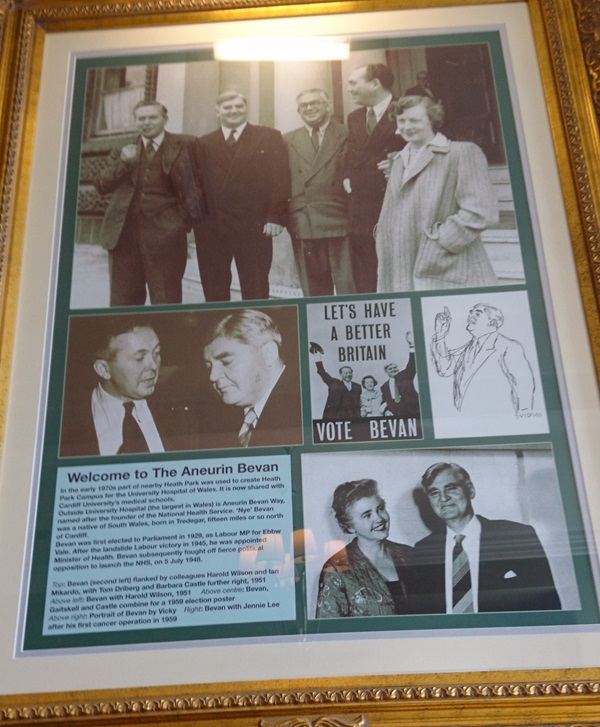
The text reads: In the early 1970s part of nearby Heath Park was used to create Heath Park Campus for the University Hospital of Wales. It is now shared with Cardiff University’s medical schools.
Outside University Hospital (the largest in Wales) is Aneurin Bevan Way, named after the founder of the National Health Service. ‘Nye’ Bevan was a native of South Wales, born in Tredegar, fifteen miles or so north of Cardiff.
Bevan was first elected to Parliament in 1929, as Labour MP for Ebbw Vale. After the landslide Labour victory in 1945, he was appointed Minister of Health. Bevan subsequently fought off fierce political opposition to launch the NHS, on 5 July 1948.
Top: Bevan (second left) flanked by colleagues Harold Wilson and Ian Mikardo, with Tom Driberg and Barbara Castle further right, 1951
Above left: Bevan with Harold Wilson, 1951
Above centre: Bevan, Gaitskell and Castle combine for a 1959 election poster
Above right: Portrait of Bevan by Vicky
Right: Bevan with Jennie Lee after his first cancer operation in 1959.
Photographs and text about the Victoria Cross.
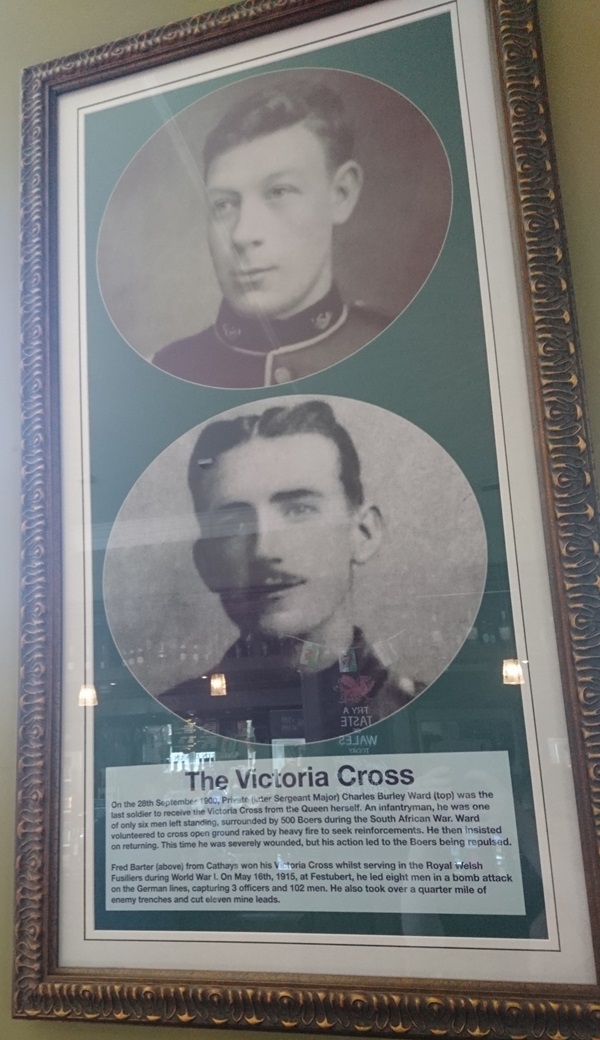
The text reads: On the 28 September 1900, Private (later Sergeant Major) Charles Burley Ward (top) was the last soldier to receive the Victoria Cross from the Queen herself. An infantryman, he was one of only six men left standing, surrounded by 500 Boers during the South African War. Ward volunteered to cross open ground raked by heavy fire to seek reinforcements. He then insisted on returning. This time he was severely wounded, but his actions led to the Boers being repulsed.
Fred Barter (above) from Cathays won his Victoria Cross whilst in the Royal Welsh Fusiliers during World War I. On May 16, 1915, at Festubert, he led eight men in a bomb attack on the German lines, capturing 3 officers and 102 men. He also took over a quarter mile of enemy trenches and cut eleven mine leads.
Photographs and text about Maindy Barracks.
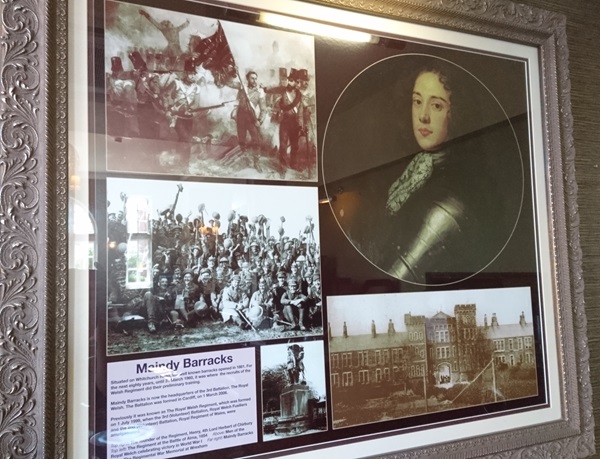
The text reads: Situated on Whitechurch Road, the well-known barracks opened in 1881. For the next eighty years, until 31 March 1960, it was where the recruits of the Welsh Regiment did their preliminary training.
Maindy Barracks is now the headquarters of the 3rd Battalion, The Royal Welsh. The Battalion was formed in Cardiff, on 1 March 2006.
Previously it was known as The Royal Welsh Regiment, which was formed on 1 July 1999, when the 3rd (Volunteer) Battalion, Royal Welch Fusiliers and the 2nd (Volunteer) Battalion, Royal Regiment of Wales, were amalgamated.
Top right: The founder of the Regiment, Henry 4th Lord Herbert of Chirbury
Top left: The Regiment at the Battle of Alma, 18454
Above: Men of the Royal Welch celebrating victory in World War I
Far right: Maindy Barracks
Right: The Regimental War Memorial at Wrexham.
Photographs and text about Robert Graves.
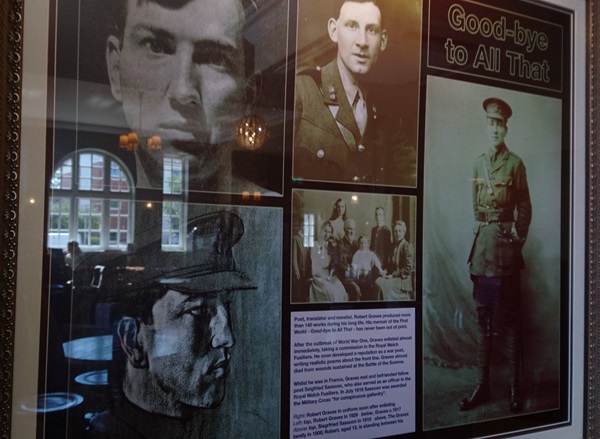
The text reads: Poet, translator and novelist, Robert Graves produced more than 140 works during his long life. His memoir of the First World – Good-bye to All That – has never been out of print.
After the outbreak of World War One, Graves enlisted almost immediately, taking a commission in the Royal Welch Fusiliers. He soon developed a reputation as a war poet, writing realistic poems about the front line. Graves almost died from wounds sustained at the Battle of the Somme.
Whilst he was in France, Graves met and befriended fellow poet Siegfried Sassoon, who also served as an officer in the Royal Welch Fusiliers. In July 1916 Sassoon was awarded the Military Cross “for conspicuous gallantry”.
Right: Robert Graves in uniform soon after enlisting
Left: top, Robert Graves in 1929, below, Graves c1917
Above: top, Siegfried Sassoon in 1915, above, The Graves family in 1908; Robert, aged 13, is standing between his parents.
A photograph and text about Roy Jenkins.
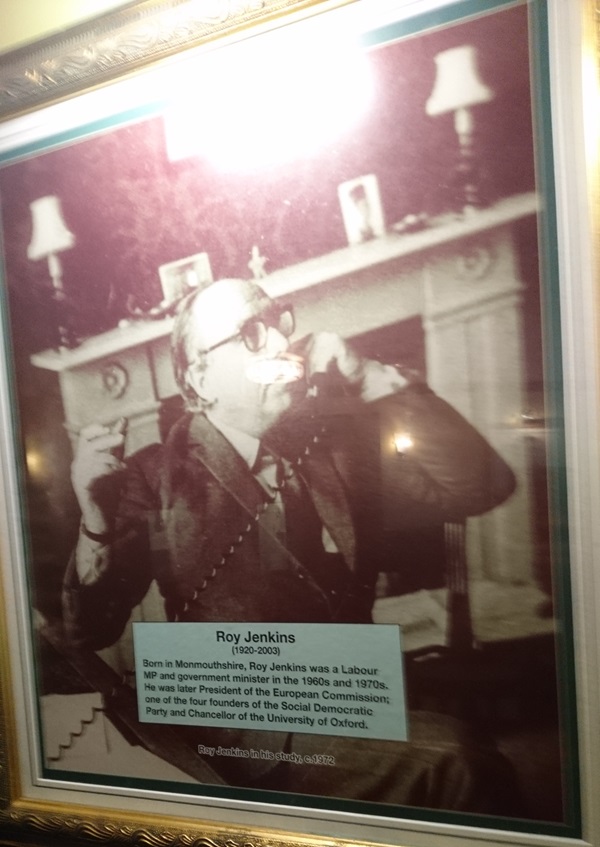
The text reads: Born in Monmouthshire, Roy Jenkins was a Labour MP and government minister in the 1960s and 1970s. He was later president of the European Commission; one of the four founders of the Social Democratic Party and chancellor of the University of Oxford.
Roy Jenkins in his study, c1972.
Photographs of the South Wales Miners’ Federation.
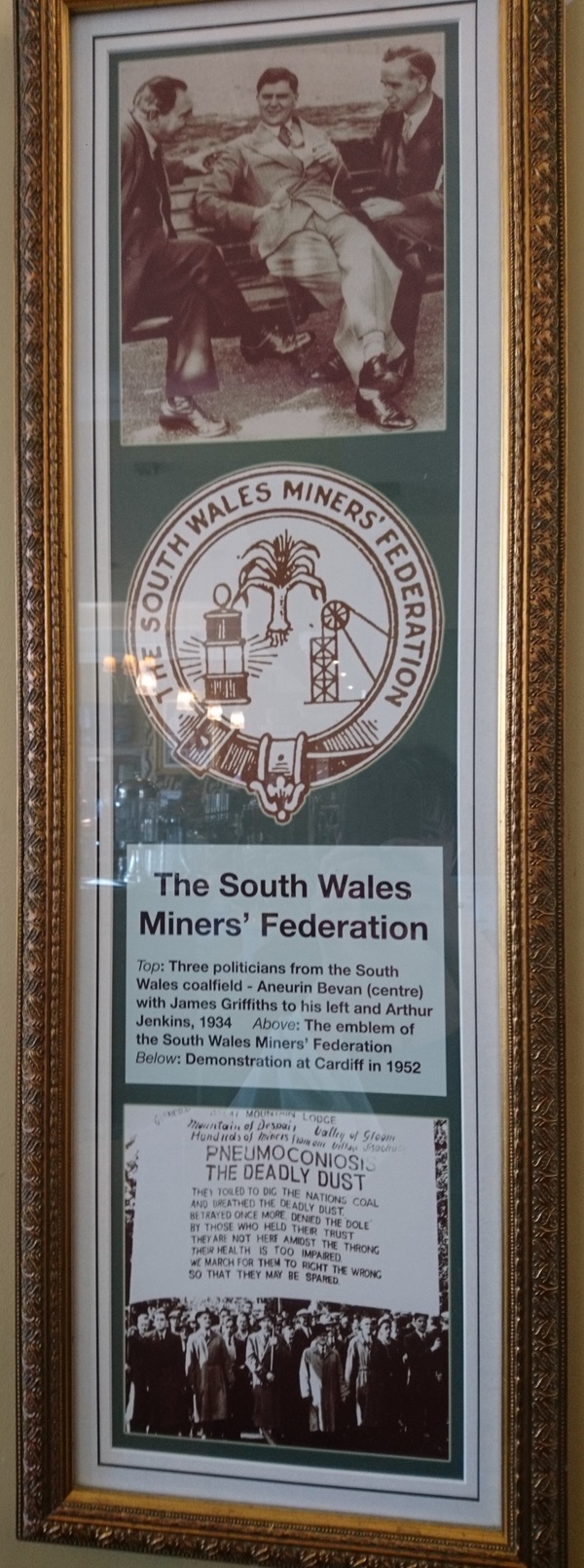
Top: Three politicians from the South Wales coalfield – Aneurin Bevan (centre) with James Griffiths to his left and Arthur Jenkins, 1934
Above: The emblem of the South Wales Miners’ Federation
Below: Demonstration at Cardiff in 1952.
Photographs and text about Maindy Stadium.
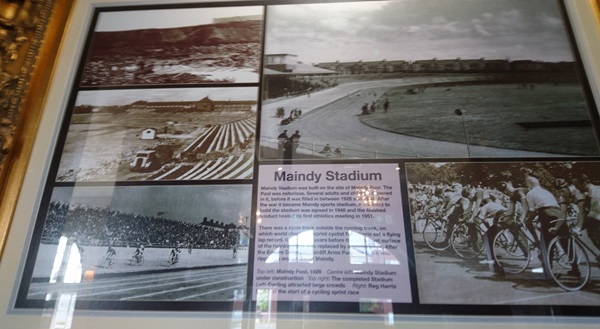
The text reads: Maindy Stadium was built on the site of Maindy Pool. The pool was notorious. Several adults and children drowned in it, before it was filled in between 1926 and 1934. After the war it became Maindy sports stadium. A contract to build the stadium was agreed in 1948 and the finished product hosted its first athletics meeting in 1951.
There was a cycle track outside the running track, on which world champion sprint cyclist Reg Harris set a flying lap record. It was eight years before the brick dust surface of the running track was replaced by a cinder track. After the Empire Games in Cardiff, the track was ripped up and renamed Maindy.
Top left: Maindy Pool, 1928
Centre left: Maindy Stadium under construction
Top right: The completed stadium
Left: Cycling attracted large crowds
Right: Reg Harris (right) at the start of a cycling sprint race.
External photograph of the building – main entrance.
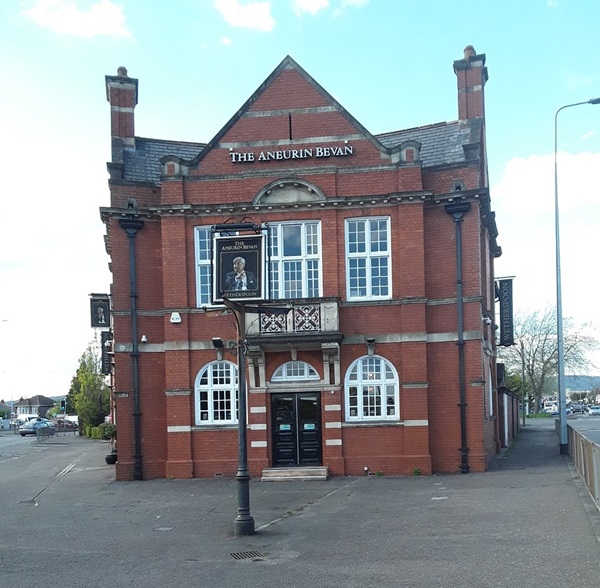
If you have information on the history of this pub, then we’d like you to share it with us. Please e-mail all information to: pubhistories@jdwetherspoon.co.uk